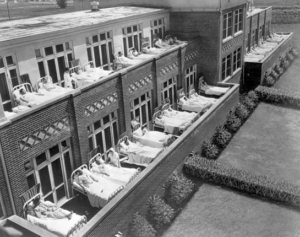
N+1 Redundancy in BSL-3 and ABSL-3 Laboratories
July 14, 2023
Redundancy is a “must” for BSL-3 and ABSL-3 laboratories. Although the Biosafety in Microbiological and Biomedical Laboratories, 6th Edition (BMBL) and the World Health Organization Biosafety Manual, 4th Edition (WHO) do not specifically mention N+1 critical equipment for BSL-3 or ABSL-3 laboratories (BMBL) or “heightened laboratories” (WHO), they both specify:
BMBL: “Loss of directional airflow may compromise safe laboratory operation.” – Page 16
WHO: “Laboratory ventilation where provided…should ensure airflows do not compromise safe working.” – Page 33
What is N+1 Redundancy?
N+1 redundancy is a risk reduction strategy used in critical containment environments such as BSL-3, ABSL-3, BSL-3Ag, BSL-4 or ABSL-4 laboratories to ensure operational reliability and containment during failure of system components to reduce risks to personnel, animal health, the public and the environment.
Building systems are made up of many components (e.g., fans, pumps, motors, variable frequency drives, control air valves, damper actuators, etc.). “N” refers to the component necessary for the system to operate. For systems that are critical to maintain containment, directional airflow, electrical power, water, fire protection, etc., an engineer provides an additional component N+1, or additional components N+2, etc., to reduce the risk of interruption of the building service serving the laboratory. These redundant components are capable of handling the full load of the building system in the event one of its primary components fails. This means that even if one of the primary components fails “N”, the redundant component “+1” takes over.
This is not unique to our industry. For instance, commercial jet airliner engines are redundant. Jet airliners are designed so that if there is a loss of one engine, the other engine takes over (N+1 redundancy). Likewise in the biocontainment industry, the electrical supply to the BSL-3 laboratory has N+1 redundancy. The “N” represents the utility that normally supplies electricity to your facility. The “+1” would be the redundant power supply (e.g., emergency generator, uninterruptible power supply, flywheel) that can provide enough power to run the entire or a portion of the building systems which serve the laboratory. Just like a commercial jet airliner, the laboratory will be able to operate until corrective action can be taken. This is extremely important for containment and especially for animal facilities as the animals will suffer if the building systems are not restored. Personnel can leave the laboratory while animals cannot. Deciding to what extent you provide redundant components (N+1, N+2, or N+3, etc.) requires a risk assessment.
What Does the BMBL and WHO Say?
The BMBL states, “A ducted mechanical air ventilation system is required. This system provides sustained directional airflow by drawing air into the laboratory from ‘clean’ areas toward ‘potentially contaminated’ areas. The laboratory is designed such that under failure conditions the airflow will not be reversed at the containment barrier”. The key words here are “under failure conditions.” The BMBL and WHO guidelines rely on the best tool we have in biocontainment: “risk assessment.”
Risk Assessment for N+1 Redundancy
Some factors we need to consider for N+1 redundancy when conducting a risk assessment are (among others):
- BSL-3 laboratory location (isolated, building, city, campus, etc.)
- Research protocol and volume of samples or biological material to be used
- Budget
- BSL-3 laboratory size
- Design intent and acceptance criteria
- Capability for ease of annual testing of HVAC and electrical systems
When World BioHazTec consults on the design of containment laboratories located at universities, research campuses and public health laboratories, meeting the N+1 redundancy provision is a group decision with input from the biosafety officer, users, facilities management, designers and cost estimators to reduce risk to an acceptable level. The resultant design needs to be reviewed for performance criteria, especially for the timing of the transfer from the failed component to the redundant component. This is particularly important for the electrical and HVAC components’ sequence of operation to restore the system to full operation parameters. The restoration of a system with the redundant component is a critical operation which needs to be observed and documented to show there was not an airflow reversal caused by the redundant component taking over. A robust sequence of operation and programming, supported by a strong biosafety program which addresses system failure events, reduces risk and documents performance. For more information about N+1 redundancy, risk assessment and laboratory design, contact World BioHazTec for a free consultation, or send us an email.







